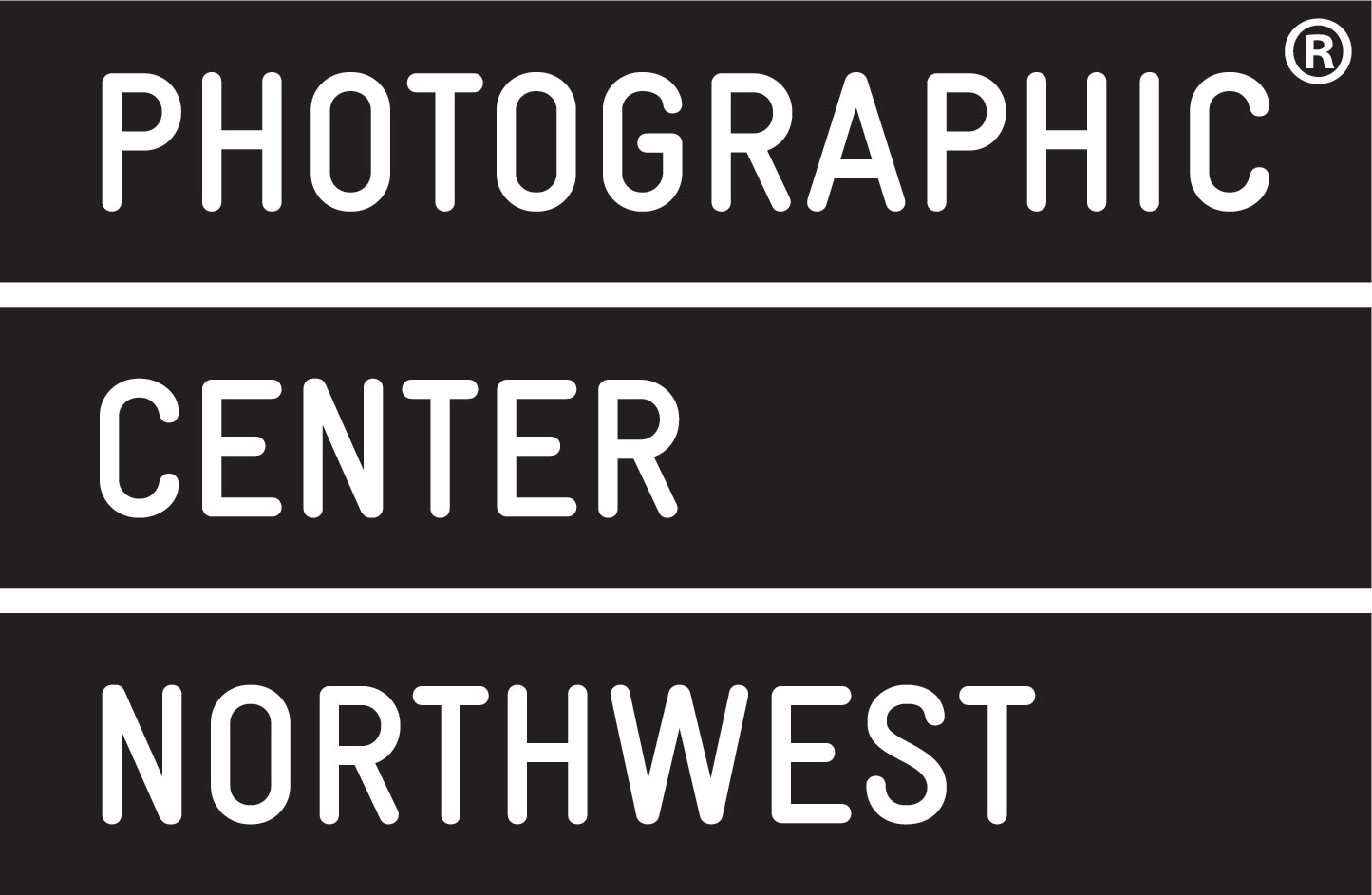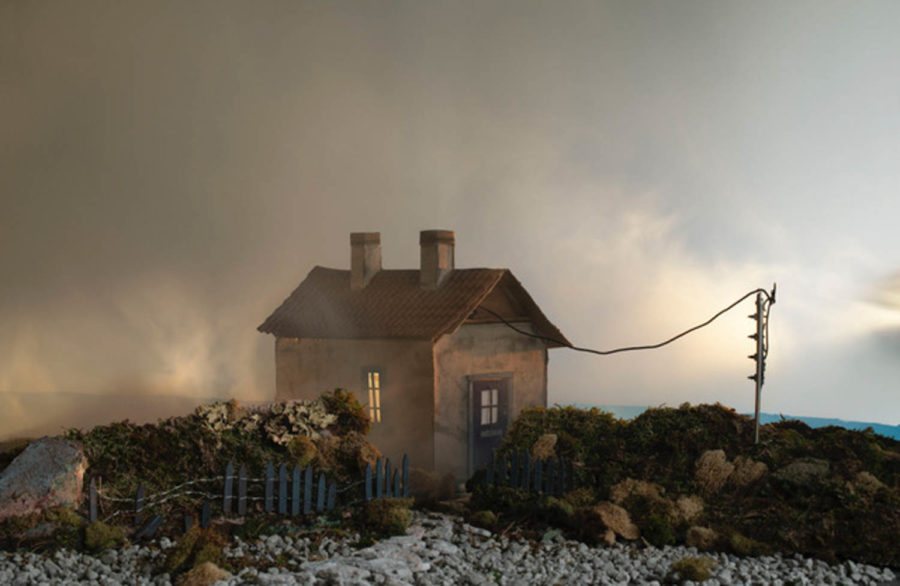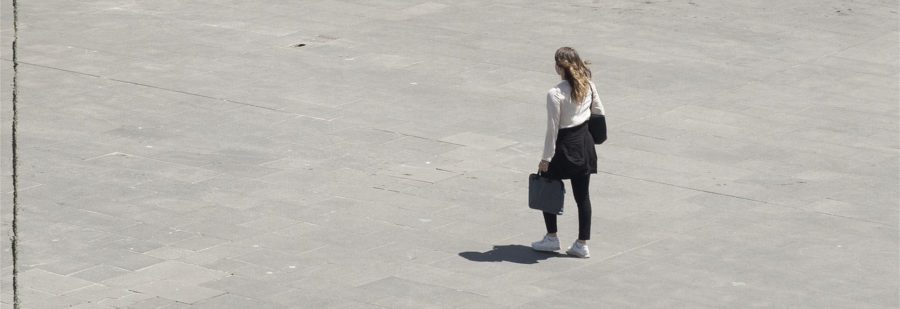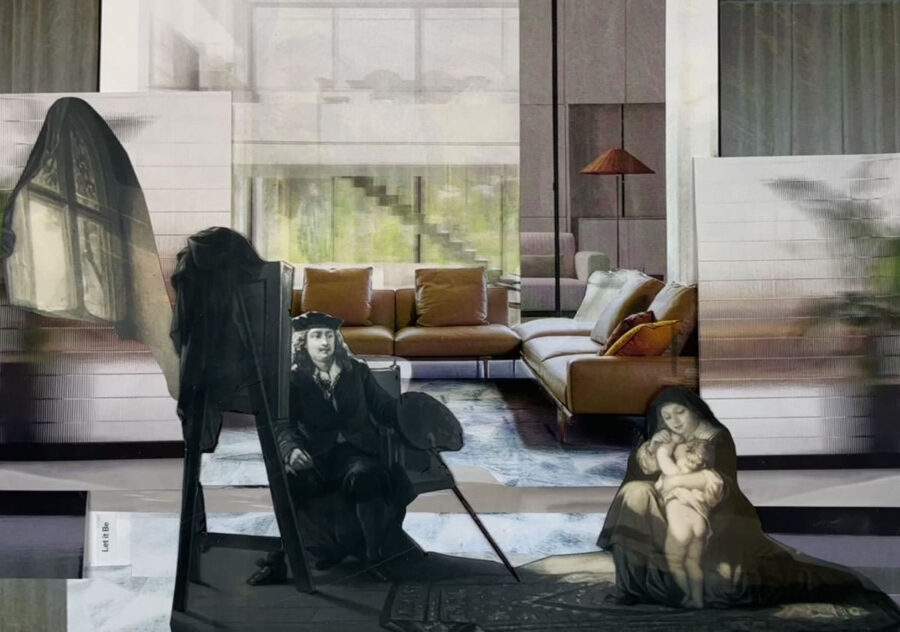Kiliii Yuyan is an exhibiting artist in PCNW’s 23rd annual juried exhibition, curated by Kris Graves.

Road and Pipeline, West of Prudhoe Bay, 2019
Archival pigment print
Edition 1/8
$1200
Please contact Erin Spencer at espencer@pcnw.org with questions or to purchase.
Tell us about yourself, where you’re from, and when you first discovered your love of photography.
My name is Kiliii Yuyan, I spent the first years of my life in Siberia/North China but mostly grew up in the US. Being from a culture that’s sub-arctic (one of the coldest places on earth), I’ve long been at home in the Arctic regions and in indigenous communities of the North.
It took me many years to come to photography— I’m also a traditional kayak-builder, and that led me to go to Alaska and Greenland to see and share traditional kayak-building there. When I became a documentary photographer, I went back to those communities to document the life of subsistence by skinboat, and ultimately working on the project for National Geographic, many years later. Today I continue my work across indigenous issues and primarily across the circumpolar Arctic.
Tell us about the work that was selected to be included in Distinction by Kris Graves
Right now, well out of sight and mind, there is an enormous area of North Alaska that is one of the most important places for migratory birds on earth. Birds gather by the millions to nest on the tundra, which is well protected by the unique Arctic wetland ecosystem from predators. It’s named the National Petroleum Reserve, but known to scientists as the intersection of two continental migratory bird flyways— the Arctic Flyway. It was considered in the 1980s to be one of the most important regions biologically, and far too valuable to contemplate oil drilling there.
Today, a variety of interests have worked towards opening the Arctic Flyway to oil drilling, potentially wreaking havoc on the bird and caribou populations. This photograph is from just to the east of the flyway, towards Prudhoe Bay, and shows how oil infrastructure carves up the tundra, migratory caribou routes, and creates high ground for predators to infiltrate bird nests. A single Arctic fox or Grizzly that finds its way into a previously inaccessible nesting area can completely consume an entire generation of birds.
Is the selected work part of a larger body of work?
This photograph is part of my series, Tundra. The tundras of the Arctic regions are poorly known and often seen as vast barren wastelands. Yet when looking at them from the air, the patterns of the landscape, with their unique freeze/thaw-created formations and wetlands became easy to see. I find myself mesmerized by how the land can be so shaped by ice, and down the line, how much the wealth of Arctic life depends on the unique shape of the land.
Who / what are your biggest influences?
A variety of amazing photographers are my inspirations, mostly in the documentary tradition. Erika Larsen’s portraits of Sami reindeer herders, George Steinmetz’s aerials of the landscape, Robin Hammond’s portraits of the most vulnerable people in developing nations, are all great inspirations to me. Aesthetically, I draw upon a lifetime of seeing the work of artists in the world.
Are you making work in response to the current pandemic? If so, can you share with us your process or a preview?
I am! I am currently on assignment covering the use of the outdoors and wilderness during the pandemic.
I’m attaching a photo of Westport, WA, typically packed with surfers during good weather and good swell, like this evening, April 8. The shutdown of all parks in WA has created a serene atmosphere along the coastline.

Westport, WA, 2020
PCNW’s annual juried call for entry provides exhibition opportunities for artists and directly supports our programs, scholarships, and labs at PCNW. This helps ensure access to photography for many future generations of creatives. We know you have many options for submitting your work, so please tell us why you chose PCNW? What are your thoughts and experience with submitting your work to different calls?
I love PCNW’s community focus and think that regional photographic non-profits are extremely worth supporting. I recognize that few have the opportunity to travel widely for their artwork, and thus bringing my work to my home region is especially important— I want to share what is going on in Alaska particularly with WA, which acts as a gateway to the Alaskan Arctic.



